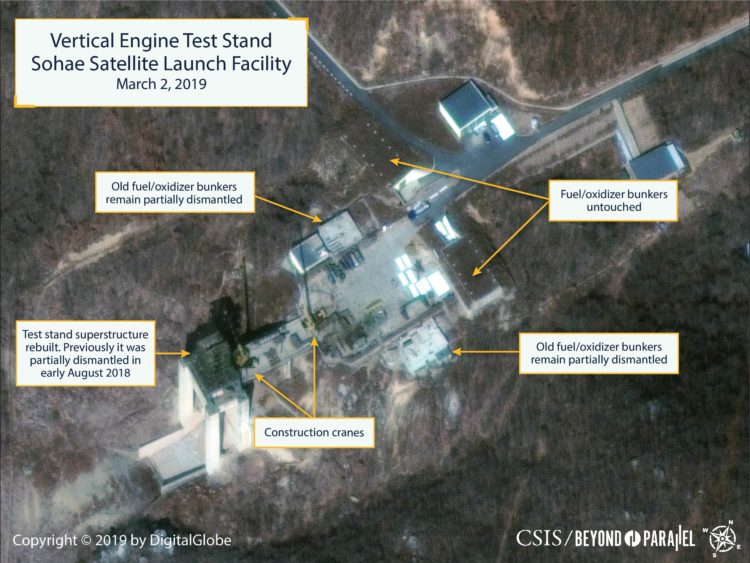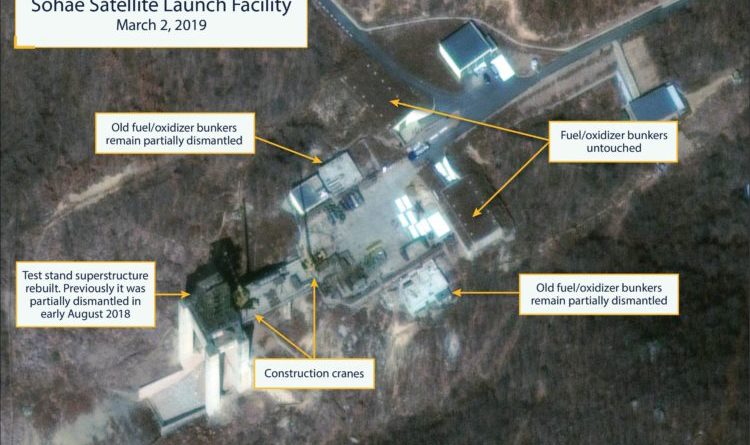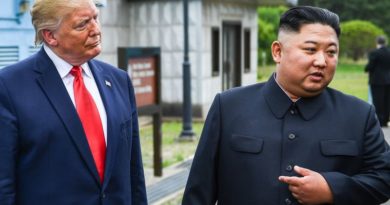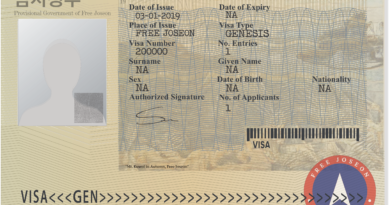DPRK Rebuilding Sohae Satellite Launch Station
Yonhap reported that the NIS briefed the National Assembly’s Intelligence Committee about restorations at the Sohae Satellite Launch Station. CSIS Beyond Parallel’s report was widely circulated in the media showing imagery of the site with accompanying analysis by Victor Cha and Joseph Bermudez. The imagery was acquired 2 March and indicate probable reassembly in the period before the Hanoi summit, though much of the media has framed this rebuilding as occurring post-summit.

Why Rebuild Now?
Although much of the reporting has claimed that the restoration of the Sohae site is intended to pressure the US in the wake of the failed Hanoi site, this does not appear to be the case. OSINT does not provide a conclusive date as to when the reassembly began, though the imagery captured while key decision makers were in Vietnam indicates the high probability that this decision was made prior to the summit. Similarly, reports that the reassembly was initiated so the DPRK could again disassemble the site following a deal seems unlikely. So, why would the DPRK begin reassembly of the Sohae site while top decision makers were engaged in negotiations with the US? To answer this question we have to first review some history of prior US-DPRK negotiations.
Brief Background
In 1994 the US and the DPRK signed the Agreed Framework whereby the DPRK agreed to freeze plutonium production at its 5MWe reactor in exchange for two proliferation-resistant nuclear power reactors. However, the DPRK continued to secretly enrich uranium and ejected all international monitors after US confrontation. Yoichi Funabashi’s The Peninsula Question provides an excellent resource for understanding this time period. Following the collapse of the Agreed Framework, the North continued its nuclear weapons program culminating in a large yield nuclear test in September of 2017 and successful ICBM launch later that year. Then, Kim Jong Un declared a moratorium on nuclear/ICBM testing in April of last year declaring they were no longer necessary. Following the Singapore summit the DPRK began dismantling the Sohae Satellite Launch Site but progress was stopped in August. Further, Kim Jong Un pledged to fully dismantle the Sohae site at his third summit with President Moon.
DPRK Motivations
After the collapse of the Hanoi summit the DPRK explicitly stated that their position, dismantlement of the Yongbyon facility in exchange for UNSC 2016-2017 sanctions relief, would “never be changed.” The willingness of the DPRK to forego nuclear/ICBM testing along with the shuttering of Yongbyon demonstrates the confidence of the DPRK in its current state weapons program. Further, the North does not consider satellite launches to be ICBM testing, thus a future satellite launch would not break their unilateral moratorium. However, satellite launches use the same delivery system as an ICBM and are viewed as the same by the US. Surely, the DPRK is well aware of this fact yet chooses to risk ratcheting tensions while simultaneously engaging the US for sanctions relief. This point is further underscored by the revelation of ICBM missile site expansion disseminated in the media last December.
The DPRK revised their constitution in 2012 to include their declaration as a nuclear-armed state. In this context the moratorium on nuclear/missile testing and the willingness to close the Yongbyon facility is in line with past DPRK actions. Additionally, analysts assess the DPRK has other uranium enrichment facilities along with a probable lithium-6 production site at Hamhung. The 2017 nuclear test and the ICBM missile sites’ expansion further demonstrates that the DPRK is moving towards the mass production and deployment phase of their weapons program. Therefore, my assessment is that the DPRK has demonstrated no interest in denuclearization and is simply following the playbook of trading unnecessary capabilities for sanctions relief.
Conclusion
President Trump stated today that “I would be very, very disappointed in Chairman Kim but I don’t think I will be, but we’ll see what happens.” The president has consistently appeared to publicly understate the DPRK threat. These understatements appear to coincide with President Moon’s statement that “Should we consistently pursue peace with firm determination, denuclearization of the Korean Peninsula and permanent peace will definitely come.” Moreover, Jeong Se Hyun, former Unification Minister in the Roh Administration, has stated that concessions are needed for denuclearization. The US, it would seem, needs to be wary of not only the DPRK but the ROK as well. Hopefully President Trump’s advisers recognize the deception of the Moon Administration and remain clear-headed about the threat. But as Trump is apt to say, “we’ll see what happens.”





Pingback: North Korean Sanctions Poorly Implemented - SAMJOKO